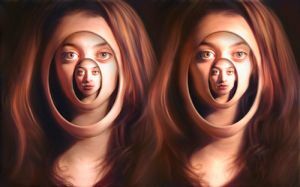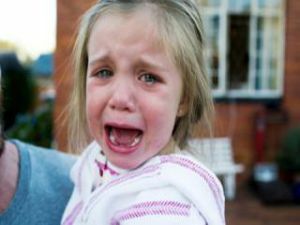 Conversion disorder( also called functional neurologic disorder) is a condition in which psychological stress is manifested by physical feelings.
Conversion disorder( also called functional neurologic disorder) is a condition in which psychological stress is manifested by physical feelings.
This phenomenon has been described as a health problem that begins as a mental or emotional crisis caused by a frightening or stressful incident, transformed into a physical problem.
For example, in the case of conversion disorder, it can reach paralysis of the legs after falling off the horse, despite the absence of physical trauma. Symptoms of this condition appear without any fundamental physical causes, a person can not control them.
Typical symptoms of conversion disorder affect movements or feelings, such as movement, swallowing, vision, or hearing. Symptoms can vary in severity, and can come and go, or be permanent.
Conversion disorder may occur suddenly after a stressful event or a physical or mental injury.
Dissociation is a psychological defense mechanism that a person unconsciously uses when the psyche is not able to cope with a certain psychic phenomenon.
Dissociation can occur even in a relatively mature and mentally balanced person in a situation of severe trauma, for example, when he becomes a victim of violence, attacks, accidents, etc.

Individual dissociative disorders
Dissociative( conversion) disorders - in the old terminology are defined by the term "hysteria".There is a clear temporary connection between the onset of symptoms and stressful situations, problems and needs of a person( for example, quarrel with a partner, fear of a night shift with the need to avoid it. ..).
Often, disorders occur because of interpersonal problems. Both mental and physical symptoms arise unconsciously, they are not under human control.
Variants of conversion dissociative disorders:
- Dissociative amnesia - loss of memory due to trauma or severe stress situation.
- Dissociative fugue - unexpected trip;while the person acts purposefully, but this period "removes" amnesia.

- Dissociative stupor - reduction or absence of arbitrary movements, speech and normal reaction to light, noise and touch, while breathing and muscle tone are usually retained.
- Trans and the state of obsession - a temporary state of qualitative violation of consciousness, loss of identity and full perception of the environment;it is an undesirable and burdensome condition.
- Dissociative motor and sensitivity disorders - complete or partial inability to perform voluntary movements, impaired ability to speak, ataxia, partial or complete loss of sight, hearing, smell, perception of heat and cold, touch, vibration, bites.
- Dissociative convulsions - seizures, to some extent, resemble epilepsy, but does not reach the bites of the tongue, involuntary urination, loss of consciousness and trauma.
- Personality disorder - the presence of two or more personalities in one person, which alternate, and there is always only one;each person has his own special preferences and characteristics, he does not know about the existence of another person.
There is a high degree of comorbidity in dissociative disorders with other psychiatric disorders. Some of them spontaneously pass, others can be recurrent, some may have a chronic course.
Reasons for the conversion reaction
Factors that trigger the development of the conversion disorder:
- serious injuries experienced in childhood: sexual violence, physical abuse, specific methods of parenting;
- severe injuries experienced in adulthood;
- serious emotional loss( loss);
- acute or situational stress;
- family disagreements;
- underdevelopment.
Symptom groups indicating
disorder Symptoms of conversion disorder that affect movement function may include: 
- weakness or paralysis;
- abnormal movements such as tremors or difficulty walking;
- loss of balance;
- difficulty in swallowing;
- convulsions or convulsions.
Symptoms that affect feelings can include:
- numbness or loss of sensation when touched;
- speech disorders, such as inability to speak or slurred speech;
- visual disorders, such as double vision or blindness;
- hearing problems or deafness.
Differential diagnosis and diagnostic criteria
Differential diagnosis is designed to distinguish dissociative conversion disorders from other diseases. Mainly, we are talking about physical diseases, for which a paroxysmal course is characteristic, possibly in combination with a qualitative impairment of consciousness.
During the diagnosis it is necessary to exclude:
- cardiovascular causes of , mainly a wide range of syncope( vasovagal, orthostatic, cardiogenic, respiratory, situationally related. ..);
- cerebrovascular disorders differ according to the symptomatology, depending on the origin;
- paroxysmal course have transient ischemic attacks ;

- classic migraine , as a rule, does not cause diagnostic problems, difficulties can arise in the absence of a headache, in case of local symptoms( migraine with aura, hemiplegic form);
- organic amnesia syndrome occurs after traumatic brain injury, due to epileptic attack or cerebral infarction and requires neurological research methods;
- abnormal movements include, for example, tics, non-epileptic myoclonus, sleep dystonia;
- sleep disorders ( nightmares, somnambulism, enuresis, REM-phase disorder, restless leg syndrome, narcolepsy) can mimic epileptic and psychogenic convulsions.
Principles and methods of treatment
Conversion and dissociative disorder have a complex etiology and symptomatology, and therefore treatment should be comprehensive and include the following methods:
- Medication treatment .Given the high comorbidity of dissociative disorders with other mental disorders, treatment of depressive, restless and psychotic symptoms with appropriate medications is recommended. The first choice drugs for depressive and anxiety disorders are antidepressants( the first line is SSRI).The use of tranquilizers should be limited because of the risk of tolerance and addiction. In the case of psychotic symptoms, treatment with atypical antipsychotics is recommended. The use of mood stabilizers can lead to a decrease in emotional instability and a decrease in impulsiveness and aggression.
- Psychotherapy .The goal of the treatment is, ideally, the reintegration of the split part of the psyche to the conscious consciousness of the person, which leads to the cessation of symptoms and improvement of the general stability of the psyche. Therapeutic procedures should lead to a general improvement in the tolerance of the psyche to stress and frustration( due to internal and external impulses), which allows a person to stop inadequate protective psychological mechanisms that lead to dissociation.

- Hypnosis .A number of individuals with dissociative disorders are extremely hypnotical, and they can be treated with conventional hypnosis techniques, such as age regression. Hypnosis can lead to increased availability of dissociated experiences and emotions and their reintegration.
- Abreaction of .With the help of abreaction, you can re-experience the strong emotions associated with trauma. Abreaction methods are usually not harmful, but they do not necessarily lead to a full therapeutic effect, since the ultimate goal of treatment is not only to test the emotions associated with trauma, but also to integrate them in the psyche and safely manage them.
In a healthy body, a healthy mind
 Maintaining mental health and preventing mental disorders are much less clear than, for example, preventing infectious diseases, for which the vaccination is sufficient, and therapeutic measures are based on taking antibiotics;in the field of mental disorders such actions are not provided.
Maintaining mental health and preventing mental disorders are much less clear than, for example, preventing infectious diseases, for which the vaccination is sufficient, and therapeutic measures are based on taking antibiotics;in the field of mental disorders such actions are not provided.
Due to drug addiction and alcoholism, spread all over the world, it reached a crisis in terms of mental health. As a result, the psychological state of millions of men, women and children is disrupted.
Child abuse is also a global phenomenon. As a trigger for mental disorders, this factor deserves much more attention than it is given today. Recently, the abuse is indicated as the main factor contributing to the development of the syndrome of split personality.



